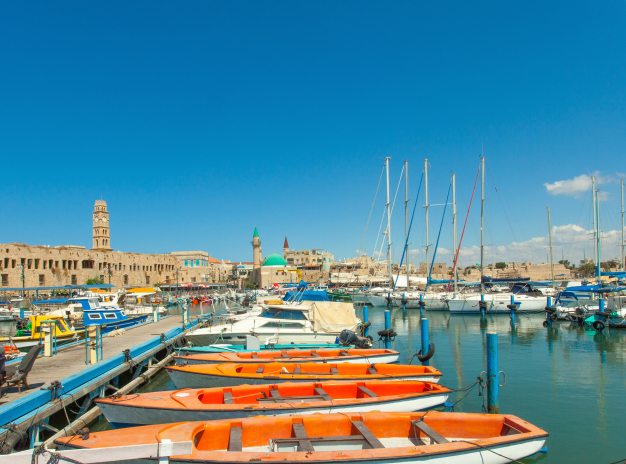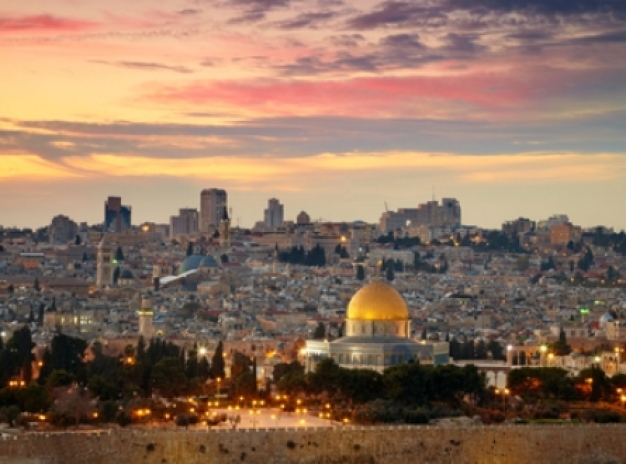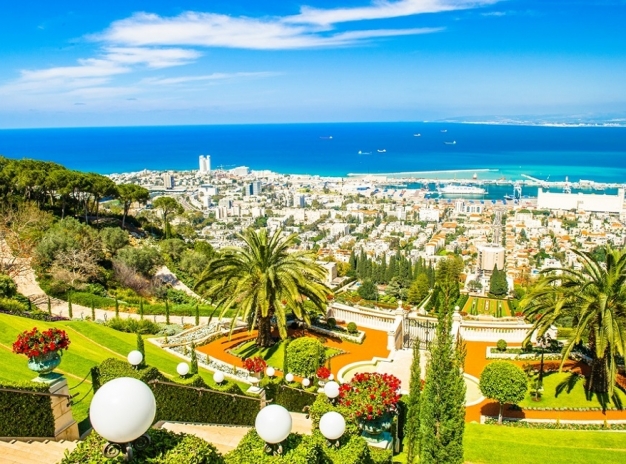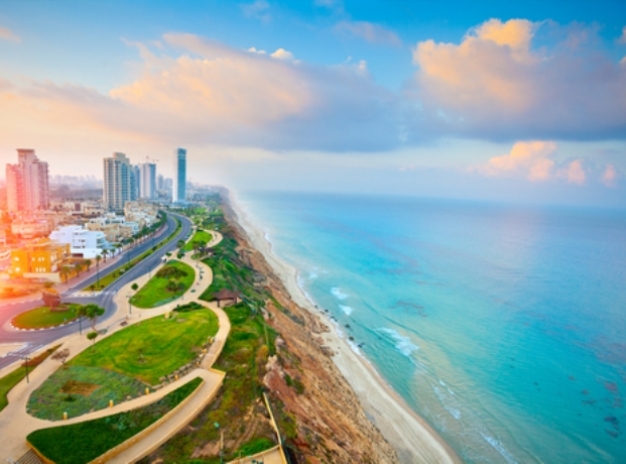
Akko (Acre)
9 Top-Rated Tourist Attractions in Akko (Acre)
Not a single city of the era of the Crusaders reached our days in such a condition and in such safety as Acre. In terms of the abundance of Acre’s historical monuments in Israel, it is probably second only to Jerusalem. Wherever you go, you will surely see something ancient and eye catching. But even more mysteries are hidden underground. The city is considered one of the world's attractions and is listed as a UNESCO World Heritage Cities.
1. Fortifications
Acre's surviving walls are truly amazing. They withstood the siege of Napoleon.
The wall surrounded the entire city from land and from the sea, but did not protect it from digging and siege stairs. The construction of the new walls of Acre was made during the time of the ruler of Palestine Ahmed el-Jazzar. On his instructions, new walls were built and old walls were fortified, and a canal was dug between them. During the Turkish rule, many walls of Acre were destroyed, the destruction continued for about 10 years. In 1910 two large passages were pierced in the northern wall for convenient access to the city, and construction of a new Acre began outside the walls of the old city.
You can make a circular hike on the walls and fortifications located around the city and enjoy the view of opening to the entire Hayfa bay, Kraot, Nahariya and Rosh Hanikra.
Address: Weizmann Street, Akko
2. Ahmed Al-Jazzar Mosque
The Al-Jazzar Mosque located in the Israeli city of Akko was built in 1745 by order of the Palestinian ruler Al-Jazzar, who was buried here in 1804. It is considered the second most beautiful mosque in Israel (after the Dome of the Rock in Jerusalem). The foundation was the remains of the temple of the Crusaders. The most beautiful mosques of Istanbul were taken as a sample. The best Greek and Cypriot masters worked on its creation.
A distinctive feature of the style is the green dome of the mosque and the minaret. At the time of the Crusaders, on the site of the mosque stood the Church of the Holy Cross, the foundation of which served as the foundation of the mosque. In the courtyard of the mosque there is a playground with a beautiful panorama of Acre.
Next to the Al-Jazzar Mosque there is a mausoleum and a small cemetery with the tomb of Jazzar Pasha and his successor Suleiman Pasha and their relatives.
Address: Al-Jazzar Street, Akko
3. Citadel
The most impressive structure in the old Acre is the ancient Citadel. The fortress is located in the northern part of the city. The height of the structure reaches forty meters. The citadel is a unique monument of the Middle Ages, which has been preserved to our days since the days of the Crusaders.
The citadel of Acre was built in the 18th century by the Ottoman Turks on the old ruins of medieval crusader buildings. At the time of the British Mandate in the early 20th century, the Acre Citadel was used as a prison for Jewish political activists and terrorists. Mostly all of them were executed.
Some claim that their souls are still in these rooms. In any case, there are many witnesses who swear that they have seen ghosts of people in old clothes. If you want to know more about this page in the history of Acre, you should visit the Museum of Prisoners of War.
Address: Al-Jazzar Street, Akko
4. Crusader City
Underneath Ahmed Al-Jazzar's citadel is the highlight of a citadel visit. The Crusader City historic site comprises a fascinating series of gothic vaulted halls, which were once headquarters for the Crusader armies. The Knights Hall and the Dining Hall here are grand examples of the soaring and inspired Crusader style of architecture. There is also a series of narrow subterranean tunnels to explore once you've finished visiting the halls (definitely not recommended for claustrophobics), which lead down to a crypt.
Location: Citadel
5. Khan al-Umdan
Khan Al-Umdan is the largest and best-preserved of all four lodging houses in Old Acre. This house is considered one of the incredible iconic buildings that Ahmed Jazzar Pasha built. The inn was erected in 1784 by order of Jazzar Pasha. It is based on forty columns of sturdy granite material obtained from Caesarea, by dismantling those buildings that remained after the Crusaders rule.
It is known that in ancient times on this very spot was the quarter where the Crusaders lived. Historians suggest that perhaps Khan Al-Umdan was built on the ruins of the courthouse and customs of the kingdom of Jerusalem.
By the end of the 19th century, the house became one of the centers of the Bahai religion, since the founder of the religion often received guests within the walls of this building, and after a short period of time, the Bahai religious school was organized in Khan al-Umdan.
Address: Salah Bazri Street, Akko
6. Crusader Tunnel
In the second half of the XII century Knights of the Templar began to build a residential quarter in the southwestern part of Acre. The Templar fortress was built on the sea coast but it has not preserved till now. The tunnel connected the Templar fortress in the west with the seaport in the east, passing under the Pisa quarter, and was a particularly important strategic object. The lower part of the tunnel is hollowed out in the rock, and the upper part is constructed of hewn stones with a semi-circular vault. The tunnel is lit by the dim light of the lamps that are in the water under the plank floor. Silence, the sound of water and the general appearance of the tunnel are introduced into the atmosphere of that time.
The tunnel was discovered accidentally during a sewer repair after a complaint by a woman who lived above the tunnel in 1994 and was open to the public in 1999.
Address: HaHagana Street
7. St. John's Church
Next to the lighthouse of the city of Acre there is St. John's Church, owned by the Catholic Church (Franciscans). It is named after St. Andrew, one of the twelve apostles of Jesus and was built on the remains of a crusader church.
It is not clear when exactly the church was built, but a few years ago an inscription carved in stone was found on the northern wall, where the year 1737 is indicated. The church was restored in 1947, and now it is the only one Catholic church in Acre.
Address: Salah Bazri Street, Akko
8. Akko Harbour
Now home to colorful local fishing boats and yachts, Akko harbor was a busy and important port from the classical age right until the medieval period. During the Crusader era, it could sometimes be occupied by as many as eighty ships. The original port has now silted up, and all that is left is this small, tranquil fishing harbor. From here, you can hop on a tourist boat to head out onto the Mediterranean and get excellent views of Akko Old City from the sea.
9. Bahje Baha'i Centre
Two kilometers north of Acre there is a magnificent park - the Bahai Gardens. In the center of this park is the holiest place for the followers of the Baha'i faith, the temple-mausoleum with the grave of Bahá'u'lláh - the founder of this faith. Nearby there is the house-museum (Bahji Mansion) with numerous original manuscripts and books about the Bahai religion in many languages, which was built in 1870 by Amid Turki.
In this house, Baha'u'llah lived from 1879 to the end of his days, he died in 1892. A place of pilgrimage for many followers of the Baha'i faith is a prison in the fortress of Acre, where Bahá'u'lláh was imprisoned from 1868 to 1870.
Location: 3 kilometers north of Akko





